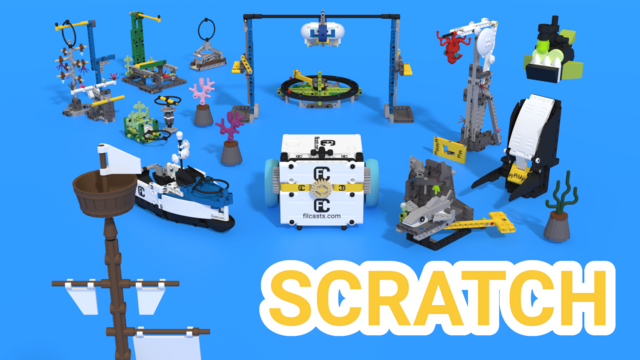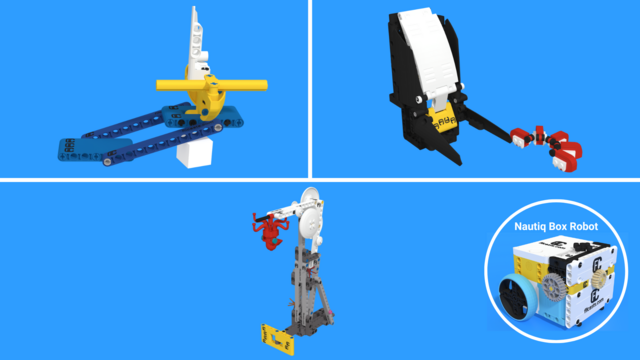In this video tutorial, we accomplish three missions from the SUBMERGED competition. First, it's the Change Shipping Lanes where we flip the model, we collect the small Krill, and then we also collect the Monster, where we have to push, collect and bring back to base. This is all FIRST LEGO League 2024-2025 SUBMERGED. We use a new very small box robot that we call Nautiq. And we'll enter into more details about how it accomplishes the missions. Three missions. Run, move forward, flip,
turn, go for the Krill, and in the same time, collect the Monster.
A close view on the flip, we have this Chain Shipping Lanes, and we want to flip the ship.
This is how the mission could be accomplished. For this mission, we've decided to go with an attachment with a rubber band.
We move forward with the robot, and once the robot reaches the mission model, there is this unlocking mechanism that triggers the attachment, releases the front side of the attachment, and the rubber band is now able to pull back on this attachment and to flip the whole mission model.
So we move forward. You can see there is a small locking part, and once we push it, the rubber band will pull on the attachment. It's a passive attachment, but with the rubber band in a sense that, okay, it is not using any motor. Now, how do you do this with the rubber bands? There is always the need to have some locking mechanism. And as you lock the attachment, you move with the attachment forward. And the moment you unlock the attachment, the rubber band activates. This is the principle. Something should stay locked in the attachment and once you push it, it will unlock and return back. Let's see exactly how it does this.
You see the yellow axis? And this yellow axis is locking the beam. Once the yellow axis is pushed, the beam is unlocked, the rubber band pulls the attachment. Collecting the Krill is the next part of the mission. We have a small container. We want to collect this Krill in this small container that's on the side of the robot. We move. Once we move over the Krill, it naturally comes into contact with the container. And then when we pull back, there is a locking mechanism there. And the Krill stays inside the container. That's the principle here for these containers. You move, you put something in them, and then when you pull back, they are locked. These Krill, they cannot escape. Let's see this from a different angle. We move with the container. We lock the Krill inside the container. This is a general principle for all of these containers where we have these parts and we move only in one direction with them. They can move only in one direction. And this is how we lock things inside the container. We can move over these things, like the Krill in this case, and we can lock it inside the container.
The final part of this three-mission run is to collect the Monster. In this mission model, it's kind of complex because it requires us to push. And as we push, this will release the Monster, and the Monster then must be collected somehow. For this we have this container at the top of the robot, the black one. We move with the robot, we push, and as we push, we release the Monster that falls into the container. The difficult part in this mission is to build a container large enough for the Monster. We turn the camera to see the missions from a different angle.
After we've seen how the attachment works, let's see how we put the attachment on the robot. It's a small box robot that we call Nautiq. And we have two axles on the attachment. It's a pinless attachment. We just put the attachment on the robot. Very fast, very precise. From then on, we can move with the attachment around the field and accomplish the missions. But the whole attachment is just two axles, and they connect with the robot, and we accomplish the missions.

